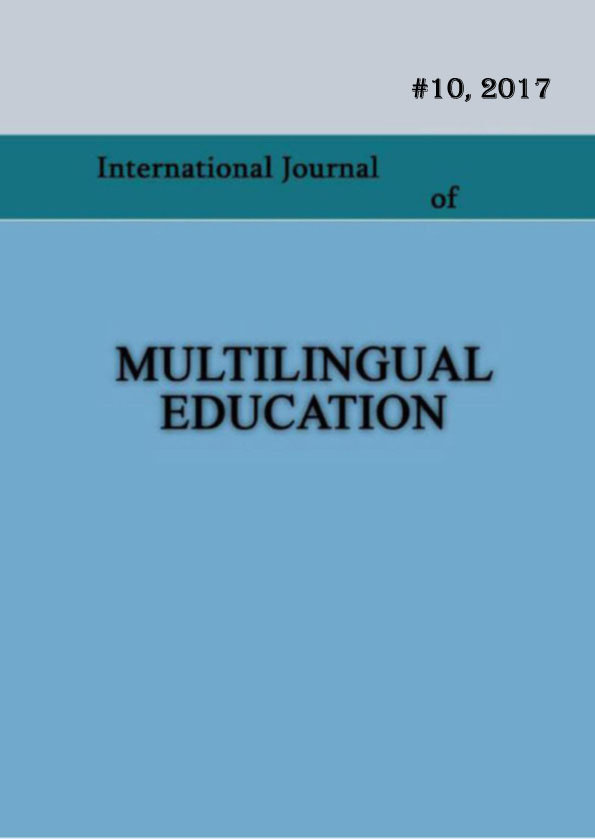Advantages of not Knowing your Students’ Language: A Case Study of a Multilingual Group of English Language Learners
Keywords:
multilingual class, ELT, communication strategies, target language.Abstract
The paper describes a case study carried out at Akaki Tsereteli State University, Georgia and aiming to identify characteristics of the language teaching process in a class where a teacher and students have no common language apart from the target language, English. The study, although limited in scope, aims to contribute to better understanding of the educational context where academic staff with limited experience of dealing with multilingual classes, have to ensure that students achieve desired learning outcomes successfully without the help of their native language for explanation, clarification, encouragement, and also without sharing cultural background. Some of the challenges the teacher face are: difficulty of introducing and practicing new vocabulary items, especially more abstract ones; lack of comprehension of presented grammatical structures due to insufficient mastery of the language/languages used for explanation; students’ overreliance on dictionaries in their mobile devices; tact required in dealing with students, especially when this affects their self-esteem.
The participants of the study were 6 speakers of Turkish, 1 speaker of Russian (with a little Turkish) and 1 speaker of Georgian who form a lower-intermediate/intermediate level group of English learners. The methods of research included lesson observation, analysis of lesson recordings and interviews with the learners. The findings of the study were contrasted with observations of monolingual groups of Georgian learners. Although the results cannot be considered conclusive, the research has identified certain areas where the teaching process might benefit from teachers’ inability to communicate with students in their mother tongue. These include the ratio of English versus other languages in an ELT class, mastery and frequency of use of communication strategies, increasing language practice at the expense of deductive grammar presentation, need for exchanging information due to the natural information gap between the teacher and students based on their cultural difference.
References
Canale, M., Swain M. (1980) Theoretical bases of communicative approaches to second language teaching and testing. Applied Linguistics 1 (1), pp.1- 47
Collis, J. (2015) Teaching in a Multilingual Classroom. Retrieved from http://www.bridgetefl.com/teaching-english-in-a-multilingual-classroom/
Cook, V. (2006) Using the First Language in the Classroom. The Canadian Modern Language Review 57(3), pp. 402–423
Retrieved from http://www.viviancook.uk/Writings/Papers/L1inClass.htm
Haines P. (2014) Using First Language (L1) in the ELT Classroom. Oxford University Press ELT. Retrieved from //oupeltglobalblog.com/2014/10/15/using-l1-in-the-elt-classroom/
Harmer, J. (2007) The Practice of English Language Teaching (4th ed.). Edinburgh: Pearson Education Limited
Nation, P. (2003) The role of the first language in foreign language learning. Asian EFL Journal
Retrieved from http://www.asian-efl-journal.com/june_2003_pn.pdf
Nijaradze, N., Dogonadze, N. (2015) Teaching Oral Communication Strategies: Effects and Possibilities. I International Conference “Higher Education - New Technologies and Innovation”, Proceedings. Retrieved from http://atsu.edu.ge/EJournal/HENTI2015/eJournal/Papers/NijaradzeNino.pdf
Nijaradze, N., Zviadadze, N. (2017) Strategic Aspects of Developing English Language Teaching. IV International Conference “Language and Culture”, Proceedings pp. 329-333.
Tolosa, C, Biebricher, C., East, M., Howard, J. (2018) Intercultural language teaching as a catalyst for teacher inquiry. Teaching and Teacher Education 70 (2018) 227-235
Published
How to Cite
Issue
Section
License
Copyright (c) 2017 Nino Nijaradze, Natia Zviadadze

This work is licensed under a Creative Commons Attribution-NonCommercial 4.0 International License.
Copyright (c) - Authors who publish with this journal agree to the following terms: Authors retain copyright and grant the journal the right of first publication with the work simultaneously licensed under a Creative Commons Attribution-Noncommercial 4.0 International License, which allows others to share the work with an acknowledgement of the work's authorship and initial publication in this journal. Authors are permitted and encouraged to post their work online (e.g., in institutional repositories or on their personal website) prior to and during the submission process, as it can lead to productive exchanges, as well as earlier and greater citation of published work (see The Effect of Open Access). Authors may enter into separate, additional contractual arrangements for the non-exclusive distribution of the journal's published version of the work (e.g., post it to a repository or publish it in a book), with an acknowledgement of its initial publication in this journal.

